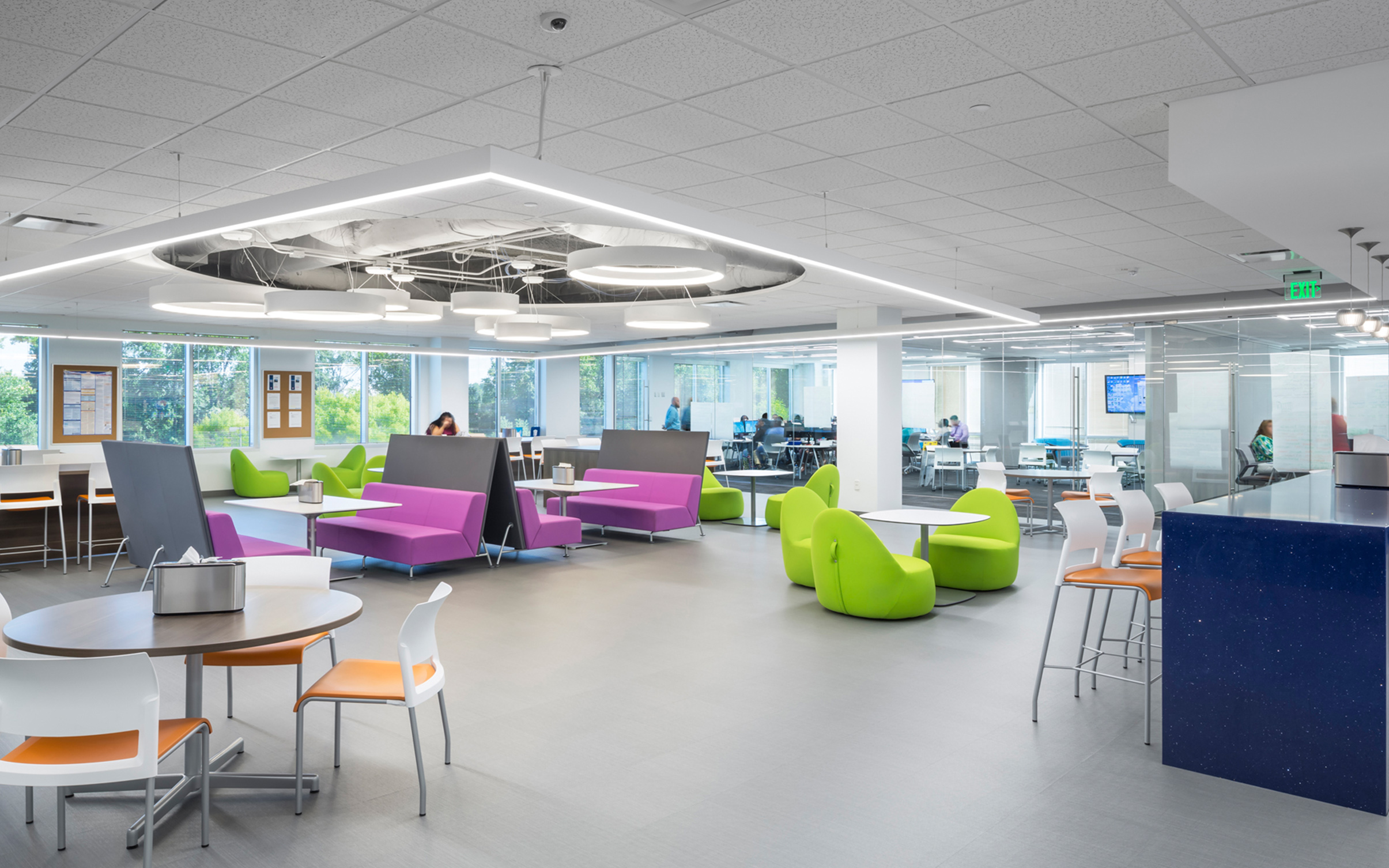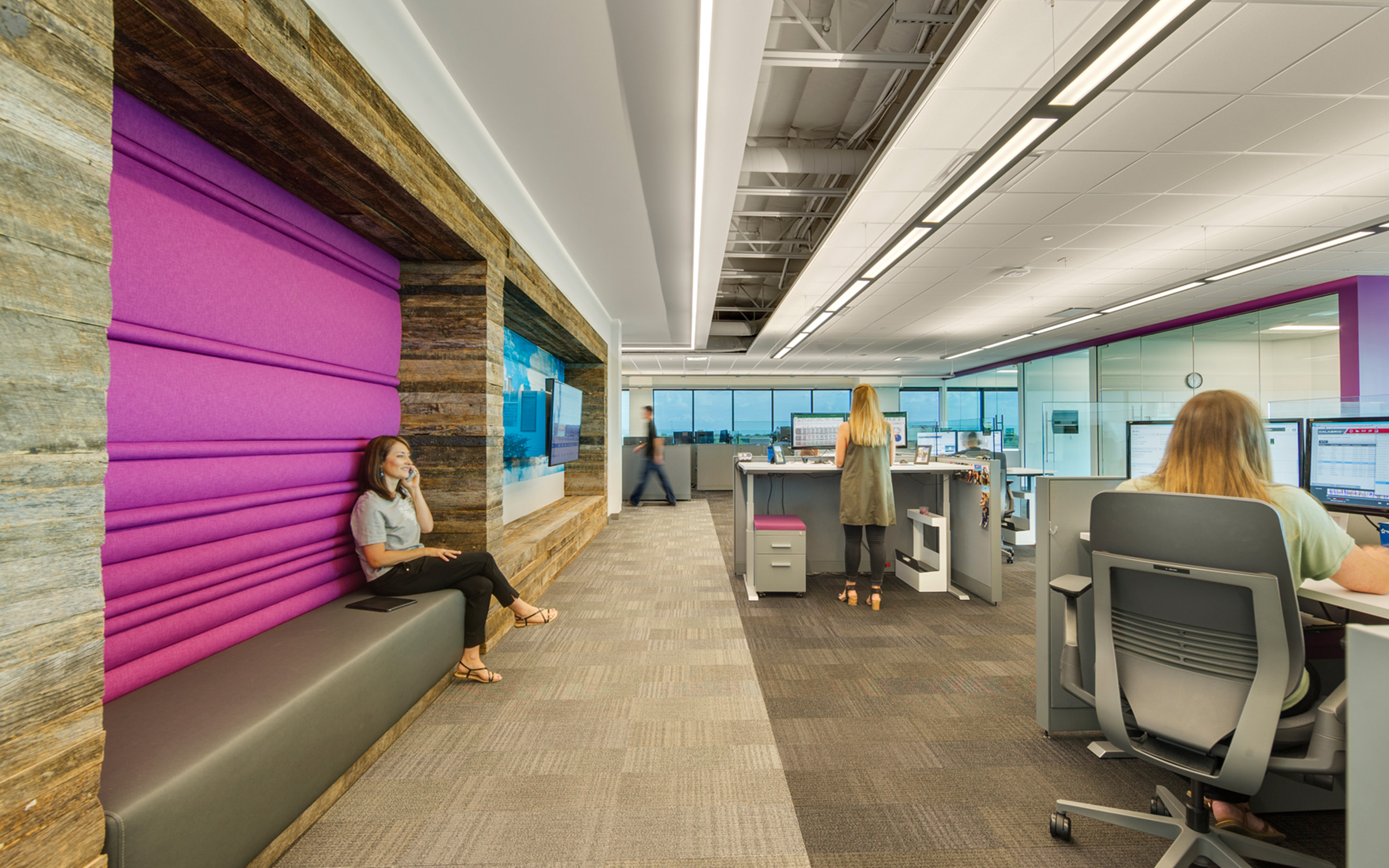Flexibility & Adaptability for Call Centers Nationwide
This article, authored by Mark Adams of SmithGroup, was previously published in Work Design Magazine.
A successful post occupancy story cannot be achieved unless a ground-breaking project is the catalyst for its inception. And all successful projects start with a great story and an even greater goal. Our story begins with a company, Republic Services, that was looking to brand their customer resource centers across the country. With a desire to create an environment that doesn’t feel like a ‘typical’ call/care center, we set out on a journey with two goals in mind: design spaces to revitalize a culture focused on customer driven strategies and create a workplace that attracts and retains a new type of employee. The desired employee is one that isn’t there just performing a job requirement and collecting a check, but someone who wants to be an integral part of the organization and contribute to the overall success of the company.
Understanding the needs and goals of the project is critical when defining its success factors. Republic Services Call Centers were originally made up of approximately 100 facilities that were relatively regionally based. The company owned some of the properties, but the majority were short-term leases. To create a more streamline and efficient entity, the plan was to consolidate the disparate offices into three regionally-based centers in Phoenix, Arizona; Charlotte, North Carolina; and Indianapolis, Indiana. Additionally, the plan was to create a flexible space model that would easily allow the centers to be site adapted across the country – a prototype approach. These centers would occupy approximately 75,000 – 90,000 square feet per location.
So, the challenge: create a prototype that could be site adapted in buildings around the country with flexible floor plates to facilitate the planning scenario that best fits the project goals. The solution: working with Republic’s commercial real estate leadership, the SmithGroup team developed eight key project drivers and guiding principles to inform the workplace design strategy for each of the locations. From this we created a space configuration template and branding elements that were easily adapted in three locations around the country. Part of the challenge was developing a universal plan that was adaptable while creating a flexible enough model to work with building typologies that the company was targeting. This included early strategic discussions about real estate options to design a more adaptable, flexible plan.
Eight Key Drivers:
- Create a new call center process. The project is about re-purposing the call center process which is yet undefined. The underlying goal is to create a process that is enabled by structure, processes and interactions that facilitates first resolution solutions.
- Craft a new call center culture. A culture that builds off Republic’s current culture but evolves to support, enable and inform a new first resolution framework. While this culture will be mindful of the strengths of the existing culture, it will transform to adopt new processes and business goals.
- Recruiting is a challenge. Due to the business environments in the three geographic locations (Charlotte, Indianapolis and Phoenix), competition is fierce across industries (finance, technology, etc.) for hiring qualified and engaged employees. This is made more challenging by the conventional view of the call center employee and the historic lack of growth potential.
- Workstations and personal computers don’t create first resolution solutions. Physical frameworks alone do not create first resolution solutions, but they do contribute. The core of this service offering is a combination of process interactions, technology, and culture along with the types of spaces and their interrelationships. First resolution solutions are not about order-taking.
- Design a process around first resolution solutions. First resolution solutions are the result of designing new processes. It involves creating a culture of empowerment and service and providing physical typologies and interrelationships that reinforce these new processes. Empowerment, transparency, a customer service mindset and ownership are critical. It creates the physical work environment that employees feel valued and that is not of the traditional call center.
- Create a culture that enables first resolution solutions. The relationships between associates, specialists, consultants and supervisors is important. Creating workspace typologies and relationships that facilitate these user experiences and enables knowledge sharing is at the core of this project.
- The call center is not about order taking. First resolution customer solutions are the opposite of the call center as order taking. This is about creating a new framework, new processes, new interactions and culture that both allow for this new customer experience driven strategy and a workplace environment that attracts and retains a new type of call center worker.
- First resolution solution problem solving = customer experience + the employee experience. First resolutions customer service is about the customer experience and the employee experience. For the customer experience to be the focus of the call center employee, the workplace must be designed for the employee experience. This facilitates the customer experience work processes and interrelationships, while at the same time, creating a unique workplace experience for the employee.
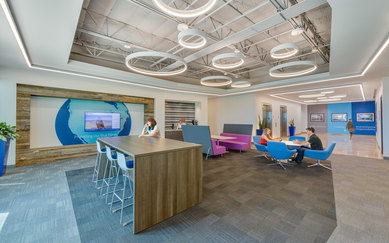
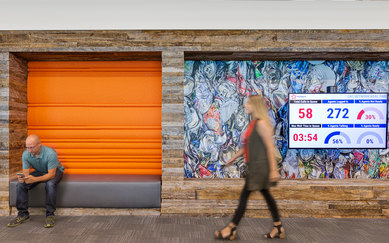
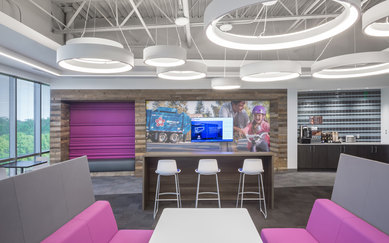
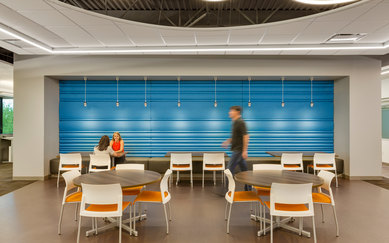
When creating, as we titled it, “The Non-Call Center Call Center” establishing objectives was critical. Creating a culture of empowerment and service, while providing physical typologies and interrelationships that reinforce these new processes was critical to the success of the new centers. Empowerment, transparency, a customer service mindset and ownership were also critical. The design team accomplished this by integrating technology throughout, providing centralized meeting spaces with flexible furniture to allow for “learning labs,” providing a large community commons space for training and meeting and relaxing spaces, while locating support spaces at the core which maximized the infusion of natural light.
To communicate the client’s story to all levels of the company from drivers to customer care representatives, we created display niches along the core that integrate technology to show statistics, service locations, weather conditions, as well as the various innovative ways the company handles waste.
Impact measures the results of your new workplace in several ways: how the workplace supports the fundamental human needs of your staff, how it supports a variety of activities and work styles, and to what extent it helps staff be comfortable, satisfied, and effective. It also has organizational impacts that affect the business as a whole and when done correctly, can improve the health and efficiency of the organization. The following are findings that support the overall success of Republic Services new spaces:
- Since the three call centers have been in operation, employee turnover rates have gone from between 35-40% down to less than 10%.
- Recruitment costs have been significantly diminished due to employees encouraging friends and interested candidates to join Republic Services. Republic feels this is largely due in part to the new work environments and the culture they help create.
- When recruiting for supervisory and managerial positions, Republic has tracked that the design and company culture have improved acceptance rates amongst candidates.
- As stated previously, the culture shift sought after due to both the plan to consolidate and the space design have created the one company culture that Republic was seeking.
- Based on post occupancy evaluation comments, employees love how open and flexible the office space is. They enjoy being able to choose how and where to do the work.
Again, a successful post occupancy story cannot be achieved unless a ground-breaking project is the catalyst for its inception. We believe that the results presented solidify the project’s success.
